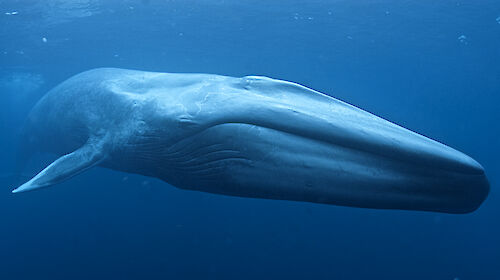National Institute of Water and Atmospheric Research (NIWA), Antarctica New Zealand and the Australian Antarctic Division are supporting a six-week research initiative in the Southern Ocean on areas of importance to humpback and blue whales and Antarctic toothfish.
The 21 scientists will be aboard NIWA’s flagship research vessel RV Tangaroa which is scheduled to leave Wellington on 28 January and return 11 March. Nineteen crew members will accompany the scientists, including a medical doctor and specialist ice pilot to navigate through the ice in the Ross Sea.
The scientists comprise eight from NIWA, a PhD student and two students from the Sir Peter Blake Trusts’ Ambassador programme and the remainder from the Australian Antarctica Division. The voyage is also supported by Antarctica New Zealand which is responsible for New Zealand’s presence in Antarctica and the Southern Ocean.
The ship heads to the Balleny Islands first to conduct the humpback whale research, before heading east in search of blue whales.
“This trip is particularly exciting because of the challenges involved in such a critical environment,” said Voyage Leader and NIWA Principal Scientist Dr Richard O’Driscoll.
“The Balleny Islands are known as a feeding hotspot for humpbacks but little is known about what they eat.
“Commercial whaling almost wiped out the blue whales however there are signs they are now starting to come back.
“Finding blue whales is a bit like looking for a needle in a haystack, but we have a secret – we’re going to listen for them.”
Sonobuoys deployed from the ship will provide bearings towards the source of the low frequency whale songs even when the singing whales are hundreds of kilometres away.
“Crossed bearings from multiple sonobuoys will accurately pinpoint the location of the whales,” said Science Leader with the Australian Antarctic Division, Dr Mike Double.
“This approach has been refined during previous voyages, now we can use it to discover why blue whales aggregate in feeding hotspots around the Antarctic.”
Tangaroa then heads into the Ross Sea to one of the main toothfish fishing grounds to study icefish and grenadiers, which are a major prey species for the toothfish. The scientists will study their abundance and distribution to help determine the potential ecosystem effects of the fishery.
Tangaroa continues to Terra Nova Bay to install an echosounder mooring underwater.
“This is an area where there are large concentrations of Antarctic silverfish larvae which are a really important prey species for seabirds, fish, whales, seals and other animals. When the ice clears in spring, you find lots of eggs and larvae of silverfish but you don’t see the adults. We don’t know if the adults move in during winter and lay their eggs there, or if the eggs drift in from somewhere else,” said Dr O’Driscoll.
“We’re going to put in an echosounder and leave it there over winter to record what happens.”
The voyage has been more than 12 months in the planning and will also involve continuous measurements of the ocean and atmosphere which will enable scientists to produce better global models. Models to improve weather forecasting and help better understand the effects of climate change in the Southern Ocean.
“Antarctica New Zealand is committed to supporting the best science in the Southern Ocean,” said Dr Ed Butler, General Manager Field Operations, Science and Planning, Antarctica New Zealand.
“By supporting this voyage we are contributing to scientific knowledge to underpin the sustainable management of the toothfish fishery through CCAMLR.
“Data from the voyage will also underpin New Zealand’s contribution to the Southern Ocean observing system – an International effort to coordinate Southern Ocean observations.”
“Tangaroa is not an icebreaker but it is ice strengthened so it can push through thin ice. We’ll be trying to avoid the ice if possible and using satellite and other information to find the line of least resistance,” said Dr O’Driscoll.
“The Antarctic is a fantastic place to work, the view is different every day; you’re always seeing something you haven’t seen before. It’s a challenging environment to work in and will be really busy but will be spectacular,” said Dr O’Driscoll.
The whale research component of the voyage is being undertaken under the International Whaling Commission’s Southern Ocean Research Partnership. The Partnership is a collaborative consortium of 11 countries undertaking non-lethal research on whales in the Southern Ocean. The Partnership is delivering valuable, best‑practice whale research to the Commission.









